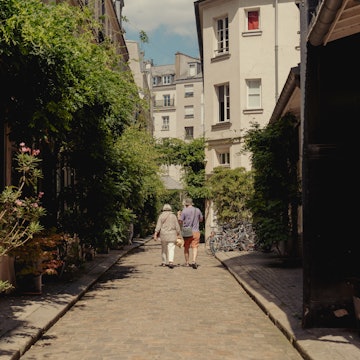
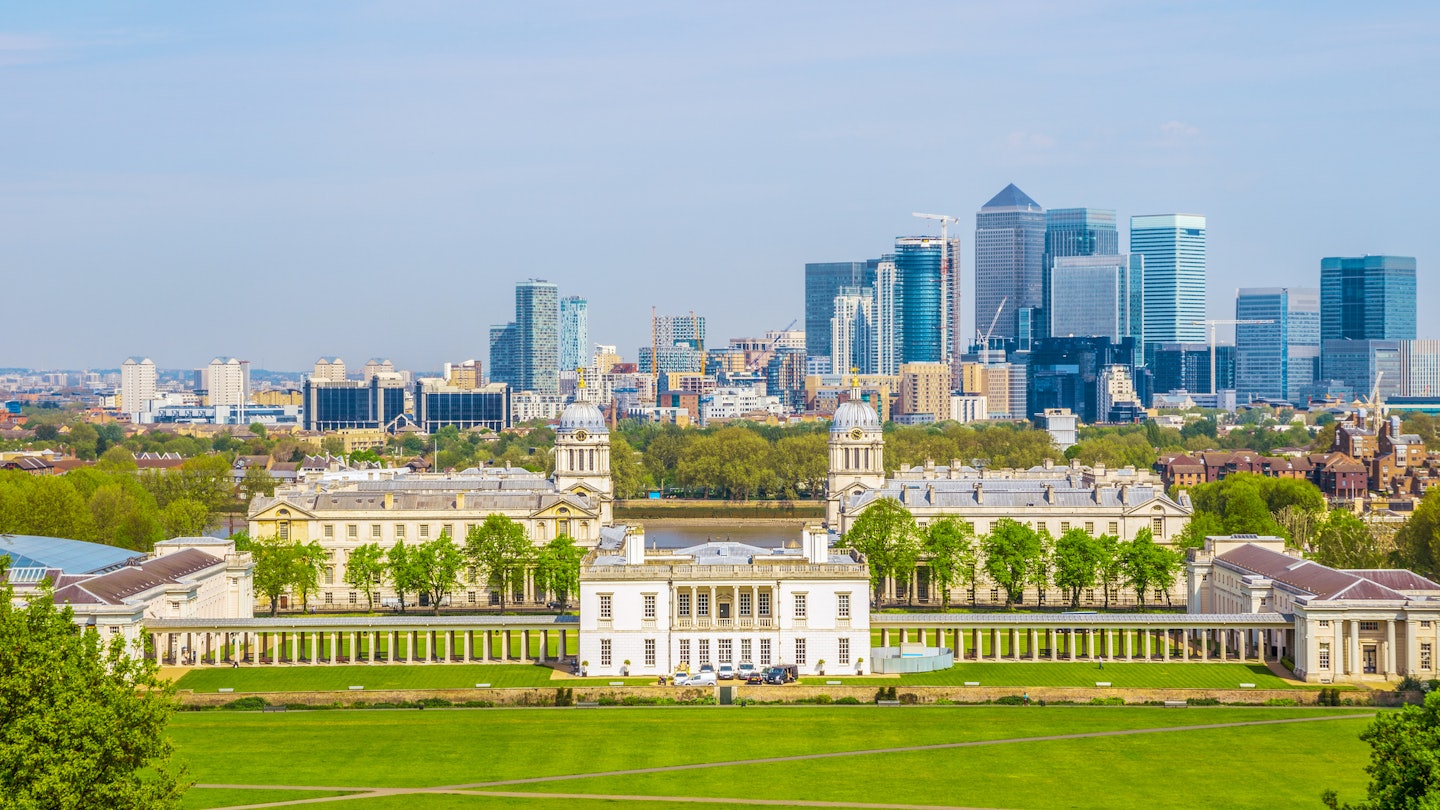
From stone circles to grand civic architecture, England overflows with historic sights. VictorHuang/Getty Images
Every corner of Great Britain is infused with history, but in England, the storybook goes into overdrive.
Castles built by famous kings and queens ornament the landscape. Abbeys, cathedrals and millennium-old churches spring up in every other town and village. Roman ruins emerge in the heart of bustling modern cities, and stone circles and timeless tombs conjure up memories of arcane rituals all over the countryside. Needless to say, immersing yourself in history is one of the best things to do in England.
England’s layered history unfolds like a real-life version of Game of Thrones. Joining the earliest prehistoric Britons, Celts arrived from central Europe, Romans seized the islands for the Roman Empire, and Anglo-Saxons slipped in from Germany. Later, Vikings stormed in by sea from Scandinavia, Normans swept in from France, and a string of imported royal dynasties infused the nation’s bloodlines and language with European influences.
If you’re looking for a holiday infused with history, here are the best historic sights in England.
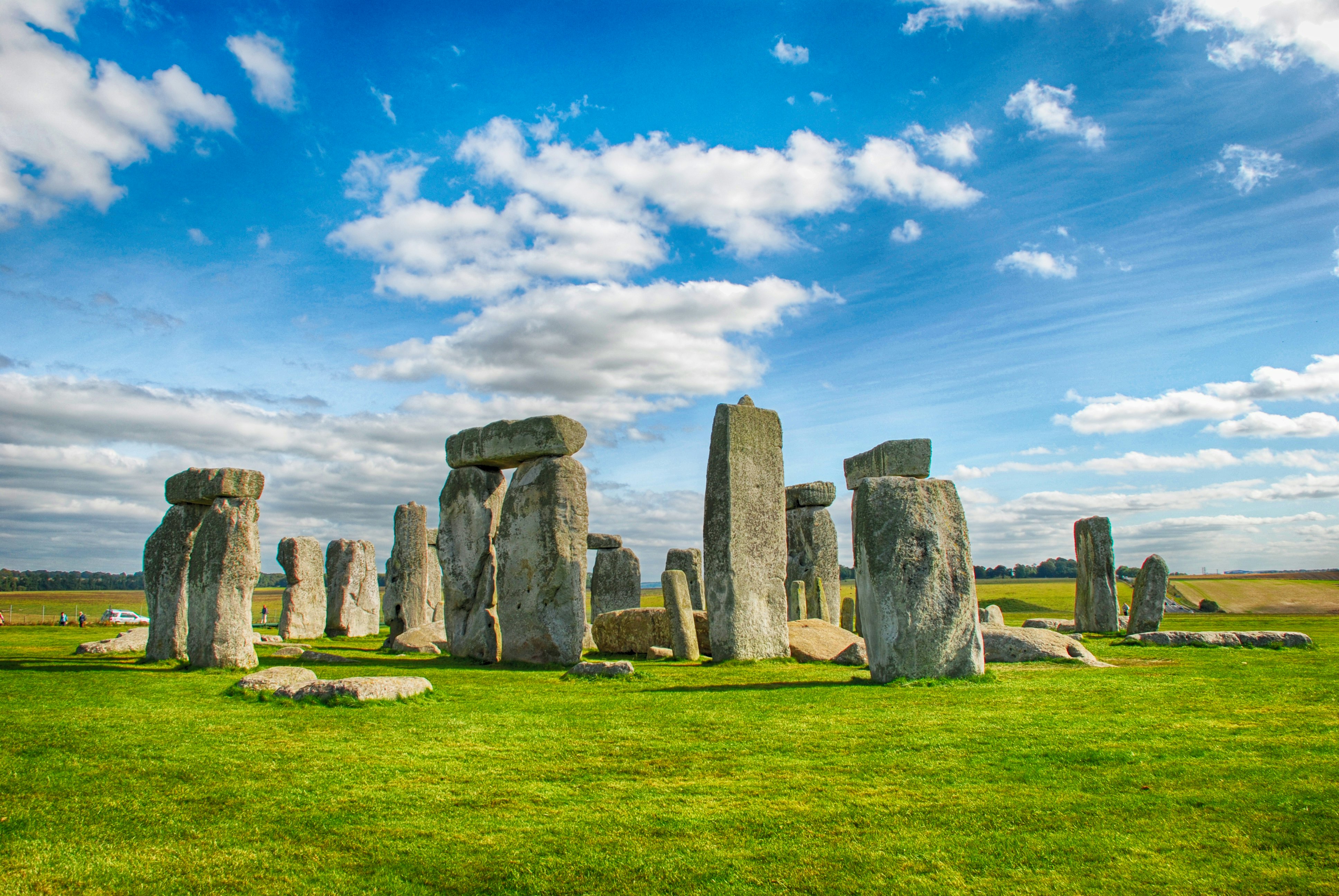
1. Stonehenge, Wiltshire
Best for prehistoric history and mystery
Just outside the town of Salisbury, England’s most famous ancient monument has dominated the English countryside for nearly 5000 years – yet its story is still shrouded in mystery. Stonehenge likely started life as a Neolithic burial site, but the mighty standing stones were stacked up in phases for ceremonial purposes, with evidence suggesting some were hauled from as far away as Wales.
England’s greatest stone circle was constructed to align with sunrise on the summer solstice and used for pagan ceremonies through the Bronze Age and Iron Age. The involvement of druids and the wizard Merlin, however, is purely conjecture, though the site still holds a massive party every year for the summer solstice in June. To see how the world has taken Stonehenge to heart as a symbol of pagan times, stream the movies Thor: The Dark World, King Arthur, Halloween III and This is Spinal Tap.
Other great English stone circles: There’s more stone circle action just north of Stonehenge at Avebury, where the world’s largest ring of standing stones spills out from the village green. The stone circle of Castlerigg near Keswick and Boscawen-un near Penzance in Cornwall are two more landmark pagan sites.
2. Hadrian’s Wall, Cumbria and Northumberland
Best for fans of Roman history
Few monuments tie as strongly to the national story as Hadrian’s Wall, the mighty defensive barricade constructed by the Romans to protect their newly acquired foothold in the British Isles from the rebellious native people to the north. Indeed, the cultural divide between England and Scotland today partly has its roots in this 2nd-century CE line of control between Roman Britain and independent Celtic Caledonia.
These days, this 73-mile fortification is best explored on foot, stopping in at the ruins of a string of sentry posts, forts and temples between Bowness-on-Solway and Wallsend on the River Tyne. If you just have time for a quick taste, try the 9.6-mile (15.5km) day walk between the impressive Roman forts at Housesteads near Bardon Mill and Chesters near Chollerford.
Other Roman defenses in England: For more Roman military history, London, Chester and Colchester have remnants of their once-towering Roman walls – the last constructed after Boudica’s siege in 60 CE – while forts built to suppress local rebellions can be seen at Vindolanda in Northumberland, Birdoswald in Cumbria and Richborough in Kent.

3. Roman Bath
Best for enduring history
Along with brutal occupation, the invading Romans also imported creature comforts, including such cutting-edge tech as durable architecture, paved roads, piped drains and hot-water bathing – thanks to the invention of the communal bathhouses known as thermae and balneae.
Nowhere conjures up the refined life of Roman Britain quite like the Roman bathhouse in the Somerset town of Bath, where well-to-do Roman ladies and gents came to bathe in heated mineral waters until the 5th century CE. You can still tour the baths today – and though visitors are no longer permitted to take a dip, you can drink a cup of the healing waters from a fountain in the Georgian-era Pump Room restaurant.
Planning tip: Bath had its second architectural golden age during the Georgian era in the 18th century, when most of the town’s grand townhouses were constructed from honey-colored local limestone. Take a walk along the Royal Crescent for a taste of this refined period in English history.
4. Lindisfarne, Northumberland
Best site for Viking history
There are many Viking sites scattered around Great Britain, but perhaps the most evocative is the lonely island of Lindisfarne on the Northumberland coast. The monastic community founded by St Aidan in 634 CE became the focus for centuries of Viking raids, until its residents fled with their treasured books to the mainland.
Wandering this wind-buffeted isle today, with its skeletal abbey ruins and tiny storybook castle, it’s easy to imagine the monks’ terror as the longships hauled up onto the beaches. After wandering the shoreline, warm your insides with a mug of mead at St Aidan’s Winery.
Detour: If you’re visiting Lindisfarne, mark out time for a detour to stunning Bamburgh Castle, which rises over the sands of dune-backed Bamburgh Beach.
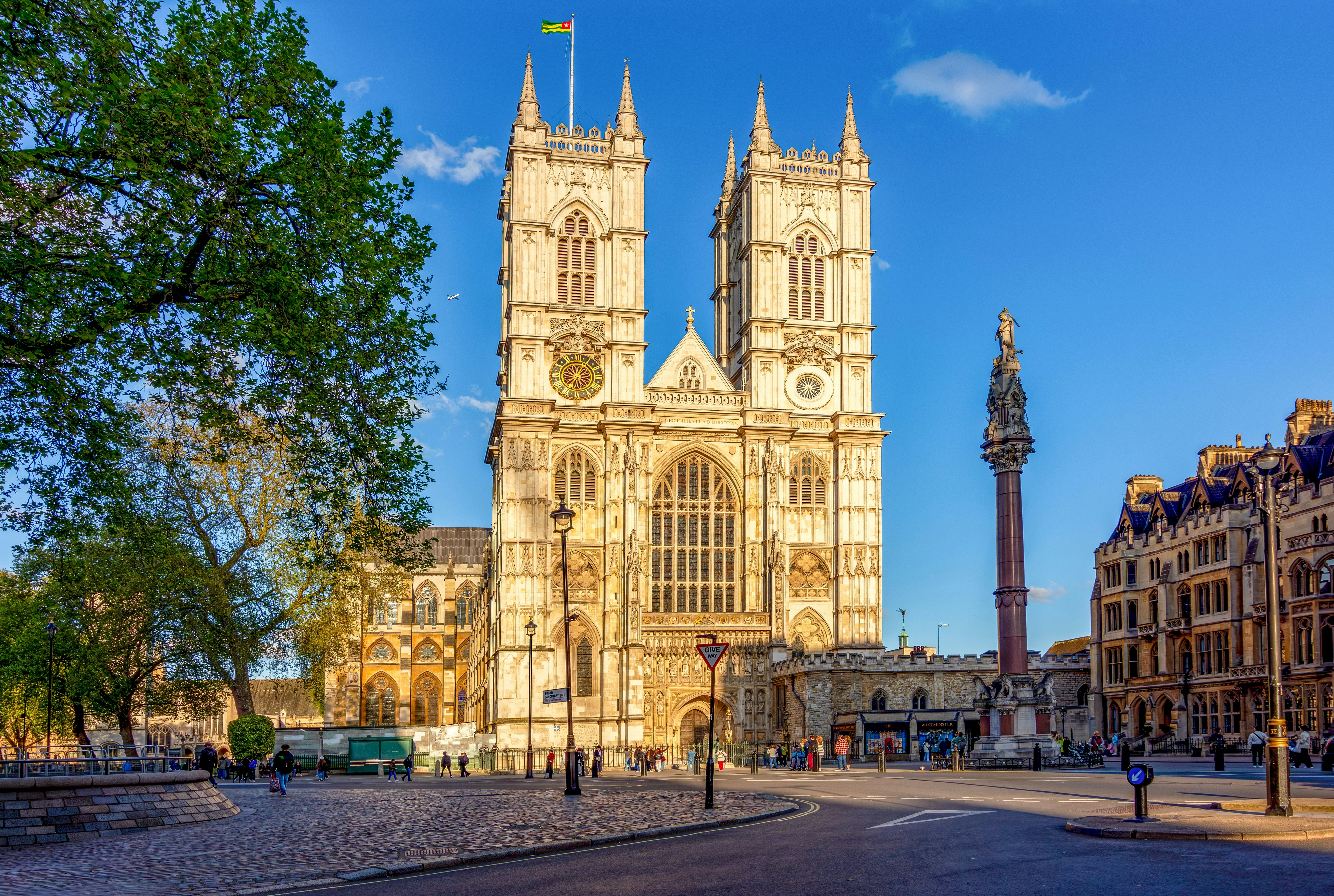
5. Westminster Abbey, London
Best for connections to English national icons
Sky-piercing medieval cathedrals, abbeys and churches dot every corner of the English landscape, but if there’s one mother church that defines the nation, it’s London’s Westminster Abbey. Founded in 960 CE, this Gothic masterpiece is the last resting place of 17 monarchs and the spot where almost every English ruler from William the Conqueror to King Charles III was crowned.
While the architecture dazzles, it’s the tombs that capture the imagination – Charles Darwin, Charles Dickens, Sir Isaac Newton, William Wilberforce and Stephen Hawking will all spend the centuries here, alongside assembled kings and queens, from Edward the Confessor to George II.
Detour: It’s worth taking a peek at nearby Whitehall, the seat of the British government. As well as the riverside Houses of Parliament, you can wander north past stately government departments, the Cenotaph commemorating the dead of WWI and WWII, and the prime minister’s residence at 10 Downing St.
6. The Tower of London
Best for fans of royal bling
If you’re after a date with history, head to the riverside castle where many of the most important events in English history actually occurred. Founded by William the Conqueror in the 1070s, the Tower of London was the seat of power for a succession of English dynasties, and served as a prison for everyone from William Wallace and Guy Fawkes to Elizabeth I.
The sprawling fortress is mobbed by visitors daily, but that does little to diminish the drama etched into these walls (literally, in the case of the graffiti in the former cells). Inside, you can view Henry VIII’s armor, the execution site of Catherine Howard and Ann Boleyn, the tower where Edward V and Richard, Duke of York were murdered, and of course, the Crown Jewels – arguably the world’s most extravagant collection of glittering crowns, baubles and trinkets.
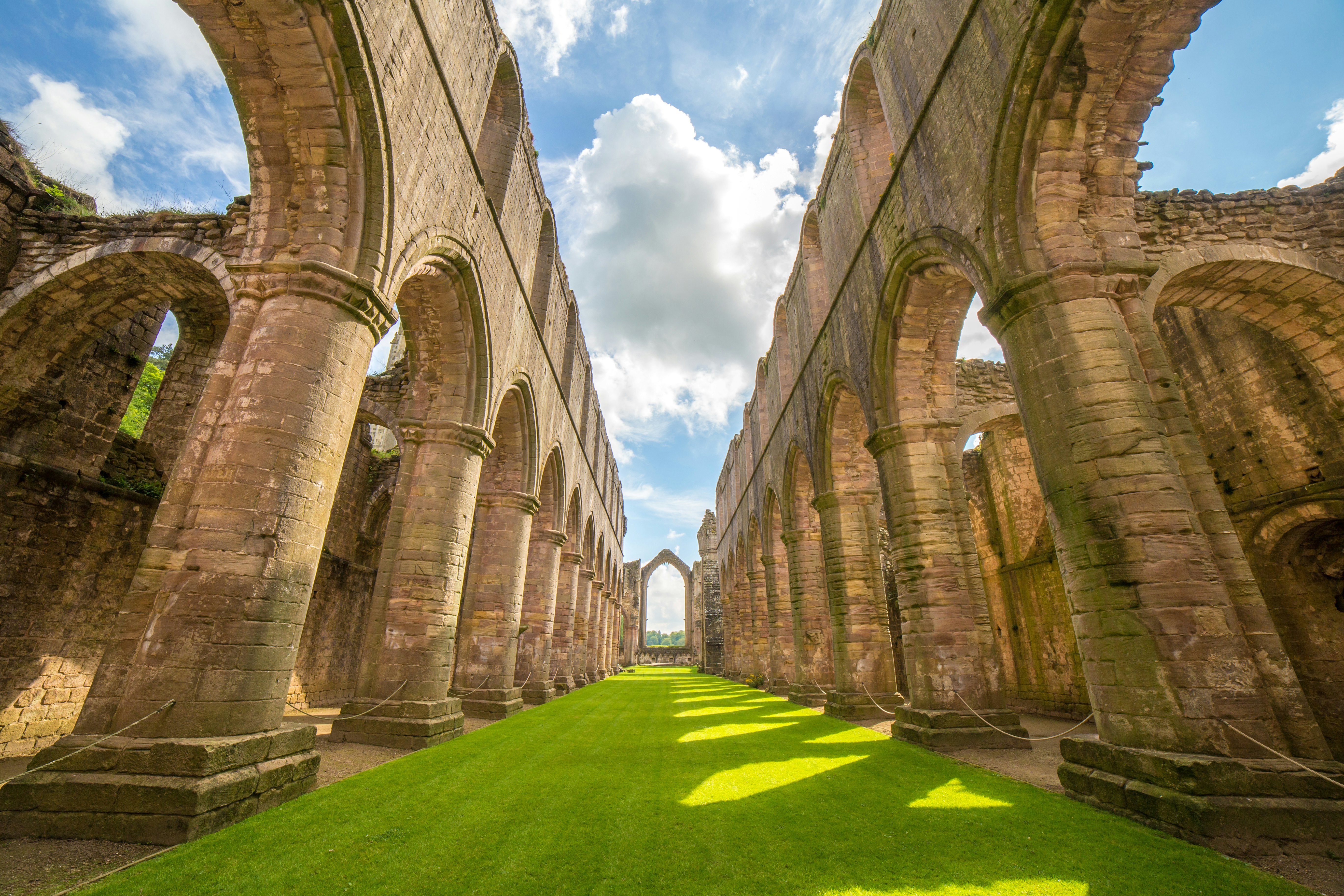
7. Fountains Abbey, Yorkshire
Best reminder of England’s religious struggles
Modern historians view the legacy of Henry VIII with less-rose-tinted spectacles than in times past. While Henry’s impact on the lives of his spouses was brutally direct, his greatest influence on England was the dissolution of the England’s monasteries, a key step in the abandonment of Roman Catholicism in favor of the newly created Church of England.
In the grounds of the Studley Royal estate in North Yorkshire, Fountains Abbey is the most impressive of dozens of ruined abbeys, monasteries and convents dotted around the country, whose ransacked remains reveal how the faith of the nation was savagely and forcefully remodeled in the 16th century.
Other important abbeys: If Fountains Abbey has piqued your interest in ecclesiastical ruins, other must-sees include Whitby Abbey – where the world’s most famous vampire made landfall in Bram Stoker’s Dracula – and Rievaulx Abbey, whose monks earned royal ire as much for their commercial interests as for their piety.
8. Historic Stratford
Best for Shakespeare fans
The historic Midlands city of Stratford-upon-Avon wears its Shakespeare connections on its sleeve – and on its stationery, and street signs, and just about anywhere else where you could slap a picture of the Bard. Nevertheless, Stratford’s historical credentials stand up to scrutiny – locally born Shakespeare created the version of English history best known around the globe.
Start your theatrical journey by wandering the half-timbered houses associated with England’s national playwright, including his birthplace on Henley St, the half-timbered homes of several of his relatives, and Holy Trinity Church, where the Bard was baptized and buried.
Detour: Tack on a side trip to nearby Warwick Castle to see the real-life location for many events in Shakespeare’s theatrical royal romps.
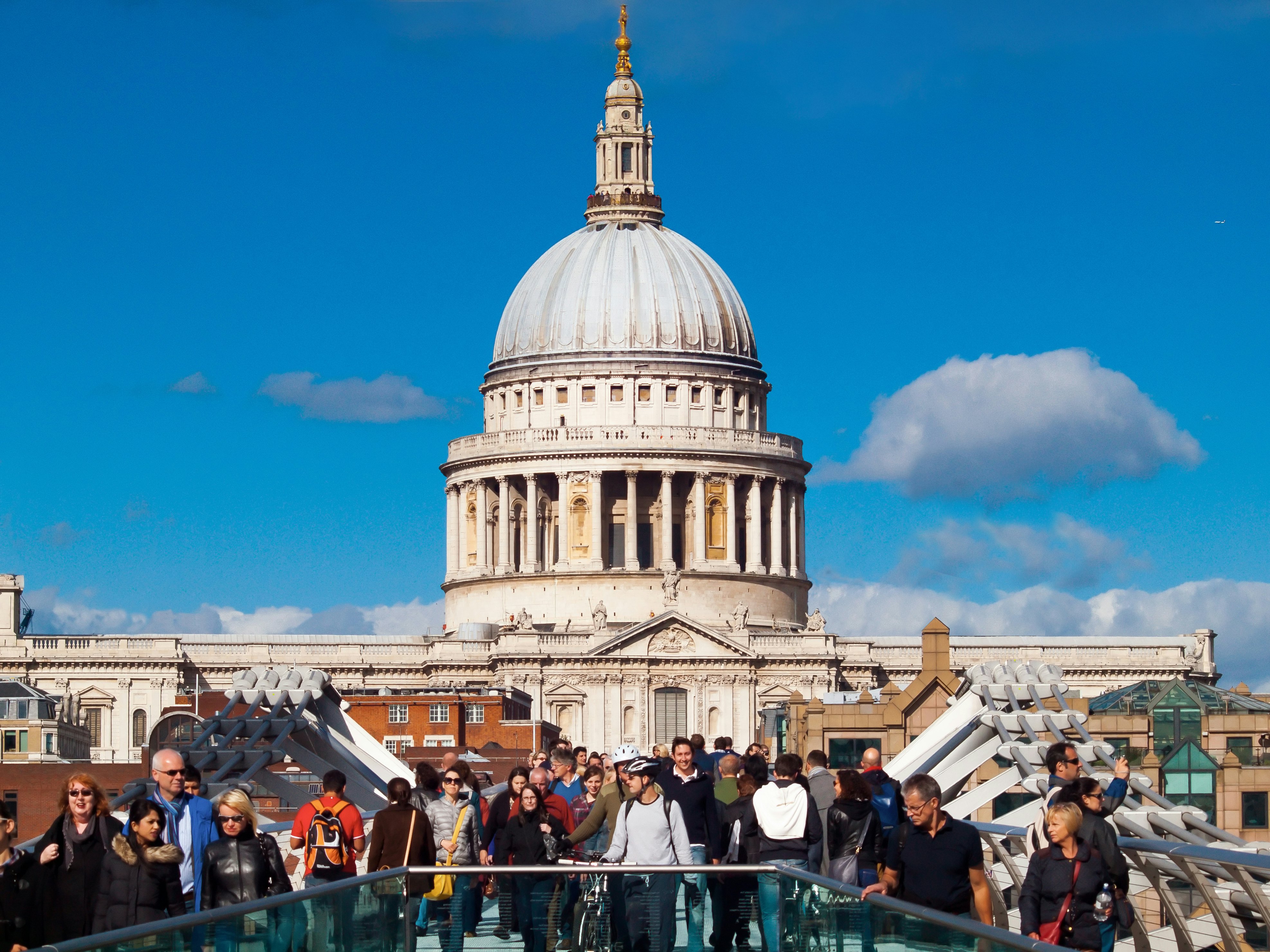
9. St Paul’s Cathedral, London
Best memorial to British resilience
Sir Christopher Wren’s magnum opus in Portland stone, St Paul’s Cathedral is a powerful symbol of England’s ability to bounce back from adversity. After a fire that started in a baker’s shop incinerated 85% of the English capital in 1666, this newly constructed, elegantly symmetrical cathedral became a potent symbol of English national resilience.
The symbolism of St Paul’s was only reinforced during WWII, when squadrons of home guards kept the cathedral safe from German incendiary bombs. Inside are monuments to great (and sometimes reappraised) national heroes and the tomb of Wren himself. The views from atop the dome are some of the most dizzyingly beautiful in the capital.
Planning tip: After visiting St Paul’s, follow pedestrianized Sermon Ln and Peter’s Hill to the once-wobbly Millennium Bridge over the Thames and the Tate Modern art museum, housed in a stunningly revamped former power station.
10. The Houses of Parliament, London
Best for political history
London’s Houses of Parliament – home to the Commons and the Lords, the two executive branches of the British government – is marinated in history and tradition, despite being several centuries younger than it first appears. The original medieval Palace of Westminster was destroyed by fire in 1834, so architect Charles Barry was commissioned to construct this mock-Gothic replacement, dominated by the clock tower housing the famous Big Ben bell.
While everything from cybersecurity to climate change is discussed inside, England’s parliament is legendary for its arcane traditions. In the chamber, the Serjeant at Arms still carries a sword (albeit ceremonial), and the monarch is prohibited from entering the House of Commons, after Charles I tried to arrest five MPs here in 1642.
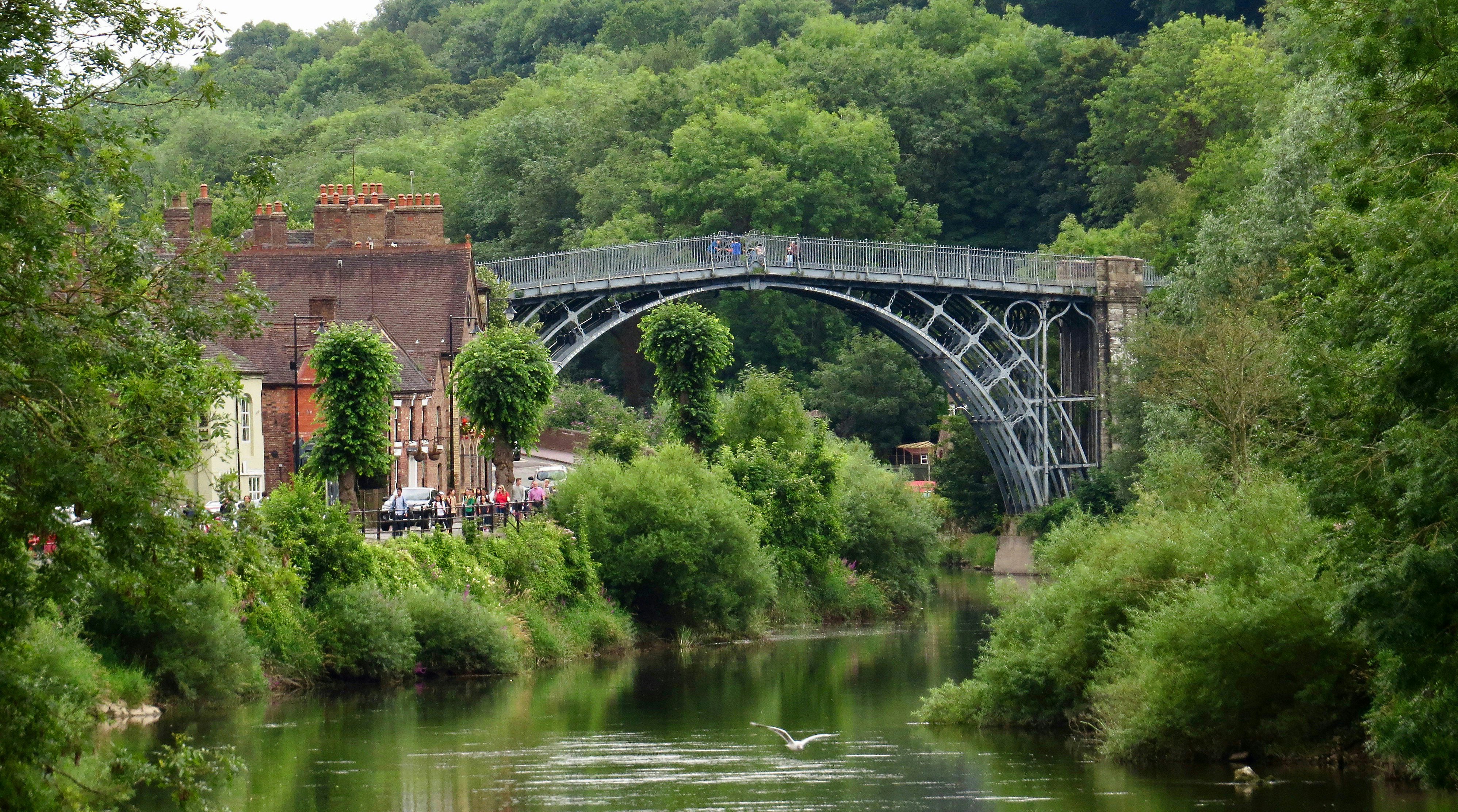
11. Ironbridge Gorge, Shropshire
Best for industrial history
The Industrial Revolution was the snowball that triggered an avalanche that propelled the world into the modern age. When Abraham Darby discovered the secret of smelting iron ore with coke in Ironbridge Gorge in 1709, the mass production of machines became possible for the first time.
Within a generation, the countryside was transformed by heavy industry – a change alluded to by Tolkien in The Lord of the Rings books – bringing massive social change in its wake. Today, the gorge is dotted with museums recalling this transformative time in history, and you can still wander across the eponymous Iron Bridge – the first monumental iron structure ever constructed.
Detour: About 15 miles (24km) east of Ironbridge, Shrewsbury is worth a visit for its red sandstone Norman abbey, and the remains of the Roman city of Viriconium at Wroxeter.
12. The Kensington Museums, London
Best for an overview of British history
English empire-builders erected mighty memorials the world over to broadcast their power and status – but we’d prefer to single out the Victorian contribution to knowledge. At the Kensington museums, England’s influence on modern culture is showcased in all its diversity.
At the Natural History Museum, a statue of Darwin presides over specimens that inspired the theory of evolution. In the Science Museum, marvels such as the first steam train recall England’s leading role in science and industry. And at the Victoria & Albert Museum, treasures gathered from around the world (not always with permission) stand alongside punk outfits and Elton John’s stacked heels.
Planning tip: Continue the historical journey a short Tube ride away at the British Museum, where you can view some of the nation’s greatest treasures, from the Mildenhall hoard of Roman silver to the Saxon burial goods from Sutton Hoo.
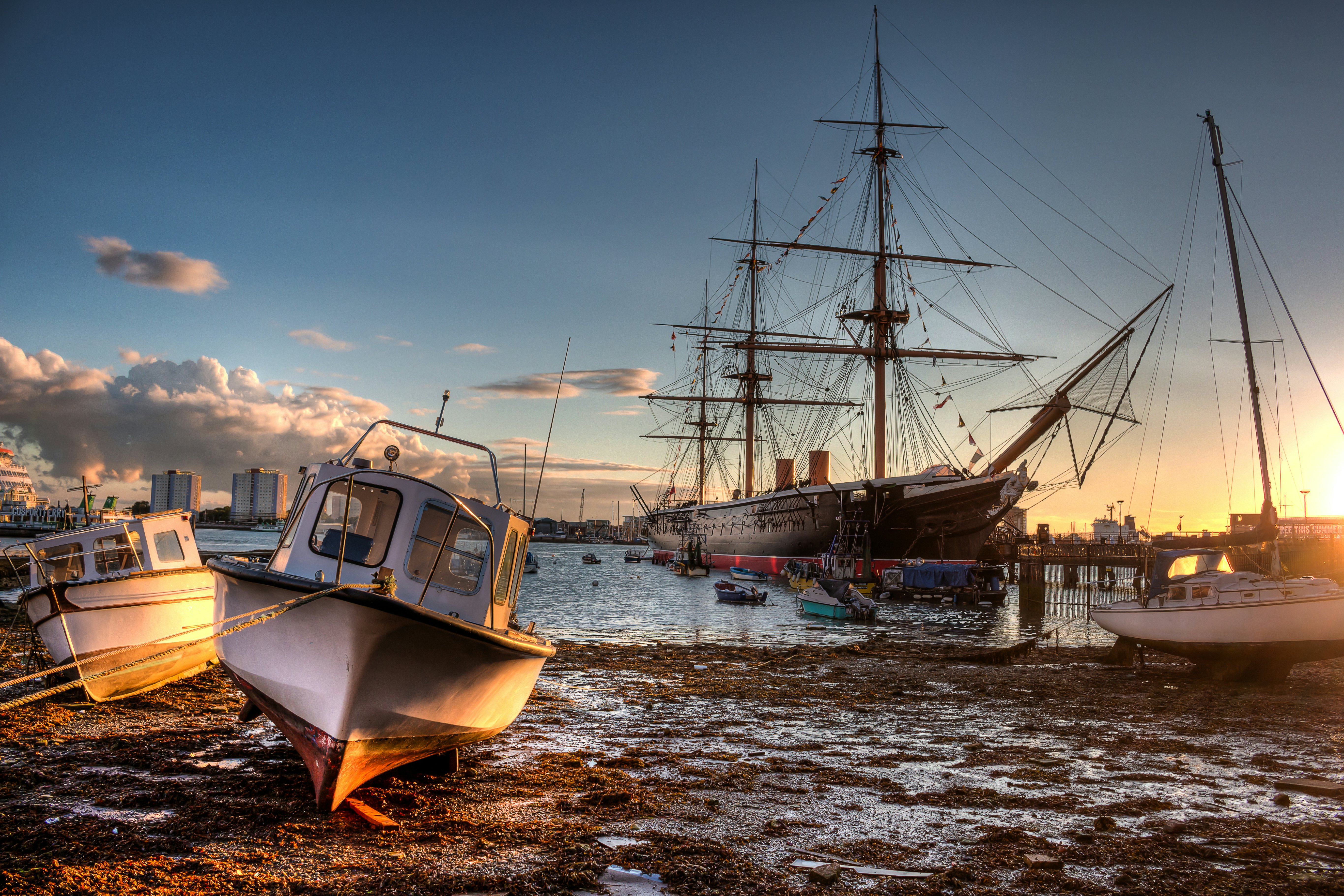
13. Historic Dockyards, Portsmouth
Best for nautical history
The British Empire is no longer viewed with quite the same unbridled enthusiasm as in times past. Still, the ships of the Royal Navy had an undeniable impact on the shape of the world. For a sense of England’s seafaring history, head to Portsmouth’s historic dockyards to explore such landmark vessels as Lord Nelson’s flagship HMS Victory.
Also here is the preserved wreck of Henry VIII’s ill-fated Mary Rose, which sank during a battle with the French in 1545. Even if the historical context leaves you cold, the sight of these mighty tall ships will have you hankering for a life of sails and swashbuckling. Before you leave, climb the Spinnaker Tower for views as far as the Isle of Wight and the South Downs.
Planning tip: While you’re in Portsmouth, take a ride on one of Europe’s last public hovercraft, which crosses from Portsmouth to Southsea or Ryde on the Isle of Wight in just 10 minutes.
14. Old Royal Naval College, Greenwich
Best for period-drama grandeur
London is dotted with national landmarks that are inexorably tied to famoous events from British history, from Buckingham Palace to Hampton Court Palace. But if you want to feel like you’re stepping into a real-life period drama, it’s hard to beat a trip to the Old Royal Naval College, sprawling beside the Thames at Greenwich.
These grand stone premises were built by Sir Christopher Wren in the 1690s as a hospital, before being repurposed as a training college for the British Navy. The undisputed highlight is the ceiling of the Painted Hall, daubed with Europe’s largest painting, which depicts myriad characters from mythology and European history – including the defeated French king Louis XIV groveling beneath the feet of Queen Mary II and King William III.
Detour: Combine the Old Royal Naval College with a visit to the National Maritime Museum and the art-filled Queens House across the road, then wander through Greenwich Park to the Royal Observatory, marking the point from which Greenwich Mean Time is measured. From here, you can soak in epic views over the Naval College and the modern skyscrapers of London’s revamped Docklands.

15. Blenheim Palace, Oxfordshire
Best for fans of 20th-century history
While the legacy of Winston Churchill is coming under increasing scrutiny, his role in unifying the nation in its darkest hour is undeniable. You can learn more about the background of Britain’s WWII prime minister at his birthplace at Blenheim Palace – arguably the nation’s grandest stately home.
Designed by Sir John Vanbrugh and Nicholas Hawksmoor, the early-18th-century home of the wealthy Churchill family is filled with trompe l’oeil murals, gilt, paintings, tapestries and heirloom furniture, plus fascinating exhibitions devoted to Churchill’s life. One item you won’t see is the 24-carat gold toilet that was stolen from the palace in 2019.
Detour: Having seen the luxurious environment where Churchill grew up, you can delve into the life of a leader at war in the Churchill War Rooms in London – set in the underground bunker where Churchill helped coordinate the Allied resistance.
This article was adapted from Lonely Planet’s England guidebook, published in June 2025.









